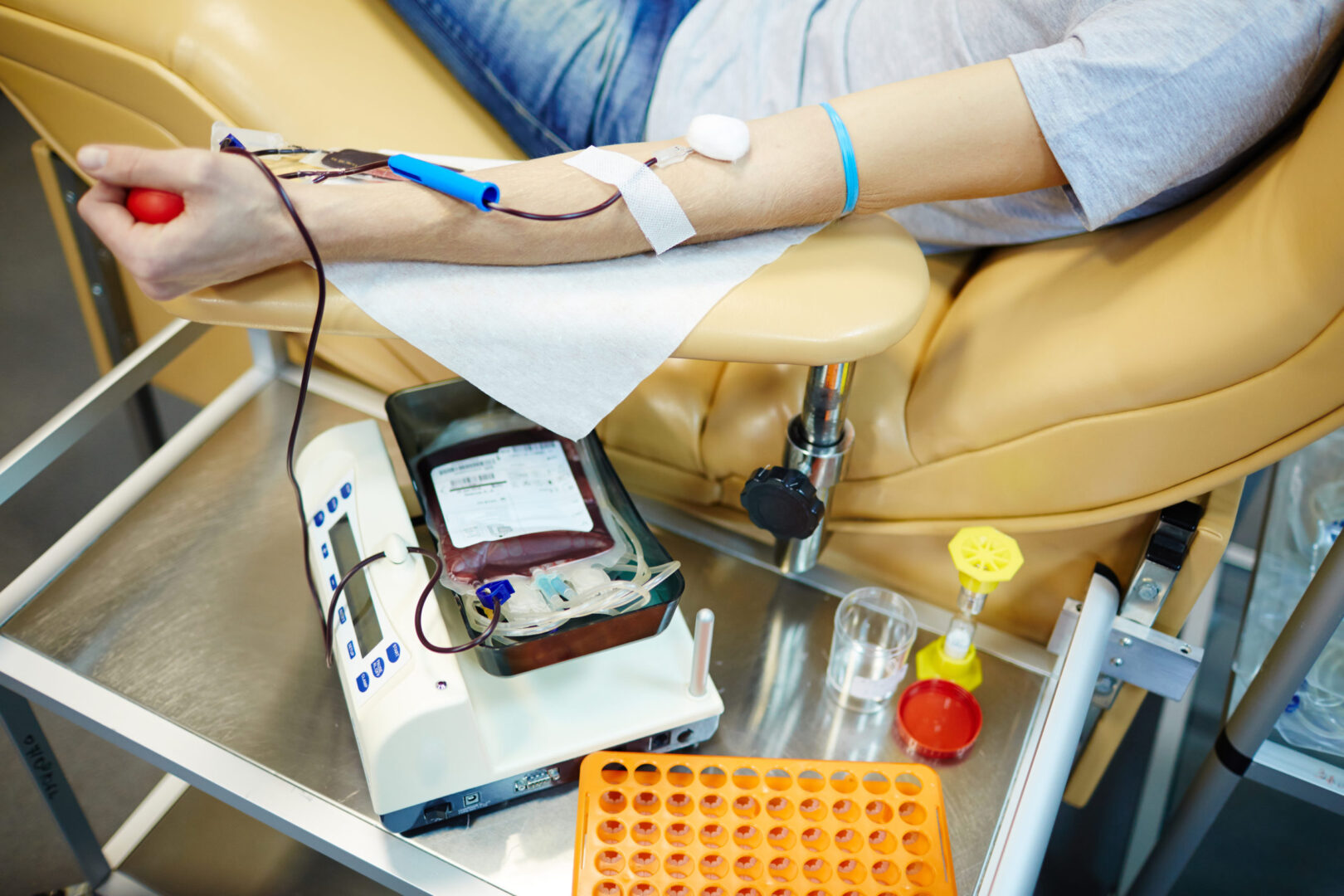Learning objectives
- Provide an evidence-based framework for the transfusion of blood products
Definition
- Blood products are any therapeutic substance derived from human blood
- Including whole blood and other blood components for transfusion, and plasma-derived medicinal products
Recommendations
Massive hemorrhage
- Give red blood cells – fresh frozen plasma – platelets (whole blood derived units) in a 1-1-1 ratio
- Transition to laboratory-guided treatment once hemorrhage control is achieved
Red Blood cells (RBCs)
- 1 unit of RBCs = 350 mL
- 1 unit will raise hemoglobin by +/- 1 g/dL
- Be restrictive in transfusing RBCs
- Cutoffs for transfusion are:
- 7 g/dL in hemodynamically stable patients
- 8 g/dL for orthopedic surgery, cardiac surgery, and patients with preexisting cardiovascular disease
- There is no benefit in using fresh blood
- Do not give unnecessary transfusions
Platelets
- 1 unit = 1 apheresis unit = 4-6 whole blood derived units
- 1 unit will raise platelets by 30,000–50,000/μL
- Giving more than 2 units is rarely useful
- Transfuse prophylactically at platelet count:
- < 10,000/μL for patients with hematologic or solid malignancies, undergoing allogeneic hematopoietic stem cell transplantation
- < 20,000/μL for elective central venous catheter (CVC) placement
- < 50,000/μL for elective diagnostic lumbar puncture
- < 50,000/μL for major elective non-neuraxial surgery
- <100,000/μL for neuraxial surgery and eye surgery
- Give platelets if thrombocytopenia and active bleeding at platelet count:
- <30,000/µL for bleeding WHO grade II
- <50,000/µl for bleeding WHO grade III/IV (i.e. massive bleeding)
Fresh Frozen Plasma (FFP)
- 1 unit of FFP derived from whole blood = 250 mL
- FFP contains normal levels of coagulation factors, albumin and immunoglobulins
- Abnormal coagulation tests (PT/aPTT) are poor predictors of bleeding risk in a non-bleeding patient
- Don’t give plasma transfusions to correct minor coagulation test abnormalities in non-bleeding patients
- Standard dose is 15-20 mL/kg and raises clotting factors by +/- 25%
- Give FPP in case of:
- Massive transfusion
- Warfarin therapy-related intracranial hemorrhage
- Disseminated intravascular coagulation (DIC), liver disease or thrombotic thrombocytopenic purpura (TTP) and active bleeding
- Specific coagulation factor deficiencies without available coagulation factor concentrate
- Dilutional coagulopathy
Adverse events
| RBCs | Platelets | FFP |
|---|---|---|
| Febrile non-hemolytic transfusion reactions (FNHTRs) | FNHTRs | FNHTRs |
| Transfusion associated circulatory overload (TACO) | TACO | TACO |
| Transfusion related acute lung injury (TRALI) | TRALI | TRALI |
| Transfusion transmitted infection | Transfusion transmitted infection | Transfusion transmitted infection |
| Allergic/anaphylactic reactions | Platelet alloimmunization | Allergic or anaphylactic reactions |
| Acute and delayed hemolytic transfusion reactions | Hemolytic reaction | |
| Transfusion associated graft versus host disease (TA-GVHD) |
Suggested reading
- Storch EK, Custer BS, Jacobs MR, Menitove JE, Mintz PD. Review of current transfusion therapy and blood banking practices. Blood Rev. 2019;38:100593.
- Carson JL, Guyatt G, Heddle NM, et al. Clinical Practice Guidelines From the AABB: Red Blood Cell Transfusion Thresholds and Storage. JAMA. 2016;316(19):2025-2035.
- Holcomb JB, Tilley BC, Baraniuk S, et al. Transfusion of plasma, platelets, and red blood cells in a 1:1:1 vs a 1:1:2 ratio and mortality in patients with severe trauma: the PROPPR randomized clinical trial. JAMA. 2015;313(5):471-482.
We would love to hear from you. If you should detect any errors, email us customerservice@nysora.com








